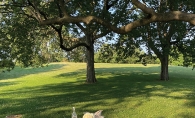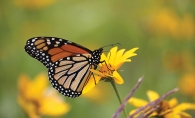While it’s a fair bet that readers know about Three Rivers Park District, how many of us are aware that there is a nonprofit foundation behind it? According to Jennifer Patel, Maple Grove resident, real estate agent and one of 13 Three Rivers Park District Foundation (TRPDF) board members, its mission has been to “connect everyone to the wonders of our parks.”
The park system’s primary source of funding is a Hennepin County property tax, with park use revenue (program fees, special use fees, equipment rental and merchandise sales) being a second source. TRPDF is a 501(c)(3) nonprofit organization that provides philanthropic support to help Three Rivers Park District go above and beyond what existing funding sources can provide. For example, the foundation donated a van to initiate the “Parks on the Go” outreach program which reaches underrepresented populations. “City parks in particular have requested visits from the ‘Parks on the Go’ van,” Patel says. “The van brings animals, pieces of nature…kind of what you’d find in a TRPD nature center.”
The foundation also sponsors low income participants to Explorer camps ($25,000 in summer 2016). The foundation has also made possible the planting of more than 31,000 native trees and shrubs in wetland, woodland and prairie restoration projects as well as improvements to park trails and facilities. “Since its inception in 1986, the foundation has conveyed over $558,000 to Three Rivers Park District,” Patel says.
Foundation board members raise funds for projects and also find themselves raising awareness of the existence and function of the foundation itself. Patel mentions a growing partnership between Gale Woods Farm and Brooklyn Center Schools. Farm-to-table program coordinator Bonnie Lohman works with Gale Woods Farm educator Hana Blisset in classrooms, on field trips and in test kitchens to bring fresh fruits and vegetables to the lunch tables of Brooklyn Center schools. Support from the TRPDF has exposed students to new foods, a new understanding of agriculture and food production, and the ability to make healthier food choices. “The Foundation has provided us with funding to provide scholarship dollars to bring hundreds of students to the farm in both the fall and again in the spring,” Blisset says. “This place-based learning is an integral part of furthering the food/farm connection.”
Examples of foundation support specific to Maple Grove abound, including improvements to displays, furnishings and educational materials at Eastman Nature Center. Patel cites a $35,000 grant from Alliance Pipeline, which supported reforestation work along the Rush Creek Regional Trail, east of Elm Creek Park Reserve. A special public art project by local artist Korrin Lohmann, funded by a generous individual gift and an employer match by General Mills, is currently planned for Eagle Lake Regional Park.
When speaking of her Eagle Lake Park sculpture, “Layered Line,” Lohmann points out that the vista overlooking Eagle Lake is an instant focal point when you enter the park. The layers of vegetation— the canopy layer, the shrub layer, and the forest forbs and grasses belowinspire her. Layering is also a botanical term referring to the burying of branches to encourage them to take root and emerge as wholly separate plants that are still able to get nutrients from the mother plant. Both burying and emerging also serve as inspiration for her project. The piece is currently being constructed offsite and will be installed on a peninsula overlooking Eagle Lake in May.









